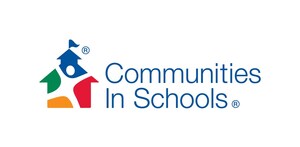Five-Year Comprehensive Evaluation Ranks Communities In Schools as the Most Effective Dropout Prevention Organization in America
Largest and Most Comprehensive Evaluation of Dropout Prevention Programs Ever Completed
WASHINGTON, Feb. 25, 2011 /PRNewswire-USNewswire/ -- Communities In Schools, the nation's leading organization dedicated to empowering students to stay in school and achieve in life, today released the results of a five-year comprehensive longitudinal evaluation, conducted by one of the nation's foremost social science evaluation firms.
After five years of detailed evaluation underwritten by The Atlantic Philanthropies, the evaluation concluded that Communities In Schools' model resulted in the strongest reduction in dropout rates of any existing fully scaled dropout prevention program that has been evaluated; that Communities In Schools is unique in having an effect on both reducing dropout rates and increasing graduation rates; and that the Communities In Schools model is effective across states, school settings, grade levels and student ethnicities. Importantly, analyses indicate that the more fully and carefully the model is implemented, the stronger the effects.
The study, the largest and most comprehensive evaluation of dropout prevention programs ever completed, was designed with eight distinct interlocking phases, including:
- An implementation study that examined results from 1,766 Communities In Schools sites nationwide;
- A quasi-experimental study that compared results from 602 Communities In Schools sites against 602 matched sites without a Communities In Schools presence;
- A "deep dive" study of 368 Communities In Schools sites to identify best practices; and
- Three randomized controlled trials, the gold standard in social science evaluation, studying 573 students at nine sites.
"This comprehensive, multi-level multi-method study has provided important information about the effectiveness of the Communities In Schools approach, and I am pleased that Communities In Schools is using the findings to make their model consistent and strong across hundreds of sites," commented Kristin Moore, Ph.D., senior scholar, Child Trends, and member, Communities In Schools National Evaluation Advisory Committee.
In comparing the results to over 1,600 studies screened by the Department of Education's What Works Clearinghouse, the evaluation concluded that the Communities In Schools model is associated with the strongest reduction in dropout rates among all existing fully scaled dropout prevention programs in the United States. Specific findings included:
- Communities In Schools' positive effect on both dropout rates and graduation rates is unique among dropout prevention programs;
- The higher the level of fidelity to the Communities In Schools model, the greater the effects, which validates the power of the model;
- Positive effects accrued to schools across states, settings (urban, suburban, rural), grade levels and ethnicities; and
- The Austin randomized controlled trial, which demonstrated a reduction in student dropout rates that was nearly three times the What Works Clearinghouse's threshold for "substantively important" effects.
"The Communities In Schools model is a powerful tool to help turn around low performing schools. In partnership with teachers, principals and superintendents, Communities In Schools is achieving impressive results in some of the most economically disadvantaged areas of our country," said Dan Domenech, executive director, American Association of School Administrators.
The results from the evaluation are already being translated into improved service delivery by Communities In Schools local affiliates. Based on the mid-point results from the Implementation Study and the Quasi-Experimental Study, Communities In Schools codified a set of program and business standards that the research revealed had the greatest effect on student improvement, and then drove those practices back into the network through an accreditation process. Approximately 108 affiliates have been accredited or are in the process, with all affiliates on track for accreditation by 2015.
"The research findings have fueled an even greater sense of urgency within our network – a commitment that we need to bring the strongest, most evidence-based and rigorously evaluated practices to the young people we serve, and that we need to do it immediately," said Daniel Cardinali, president of Communities In Schools.
In addition to taking this research to practice, Communities In Schools has identified several areas for further study, and is currently developing plans for future phases of research. "We have an obligation to the young people we serve and to the field we lead to continue to grow the body of evidence that informs our work," said Cardinali.
N.B. In conducting this research, the evaluators adhered to the approach of the What Works Clearinghouse in measuring program effects, which recognizes the practical importance of understanding the magnitude of effects (as measured by effect size) as opposed to relying solely on statistical significance.
A copy of the final evaluation report is on our website at:
http://www.communitiesinschools.org/about/publications/.
About Communities In Schools
Communities In Schools surrounds students with a community of support, empowering them to stay in school and achieve in life. Through a school-based coordinator, Communities In Schools connects students and their families to critical community resources, tailored to local needs. Working in more than 3,400 schools, in the most challenged communities in 25 states and the District of Columbia, Communities In Schools serves nearly 1.3 million young people and their families every year. It has become the nation's leading dropout prevention organization, and the only one proven to both increase graduation rates and reduce dropout rates. Visit our website at www.communitiesinschools.org.
Special Thanks to Pearson
The release of the Communities In Schools National Evaluation is supported by a grant from Pearson, the global leader in education and education technology, and an innovator in the development and implementation of early warning indicator systems, one of the fundamental elements of effective dropout prevention efforts.
SOURCE Communities In Schools
WANT YOUR COMPANY'S NEWS FEATURED ON PRNEWSWIRE.COM?
Newsrooms &
Influencers
Digital Media
Outlets
Journalists
Opted In






Share this article